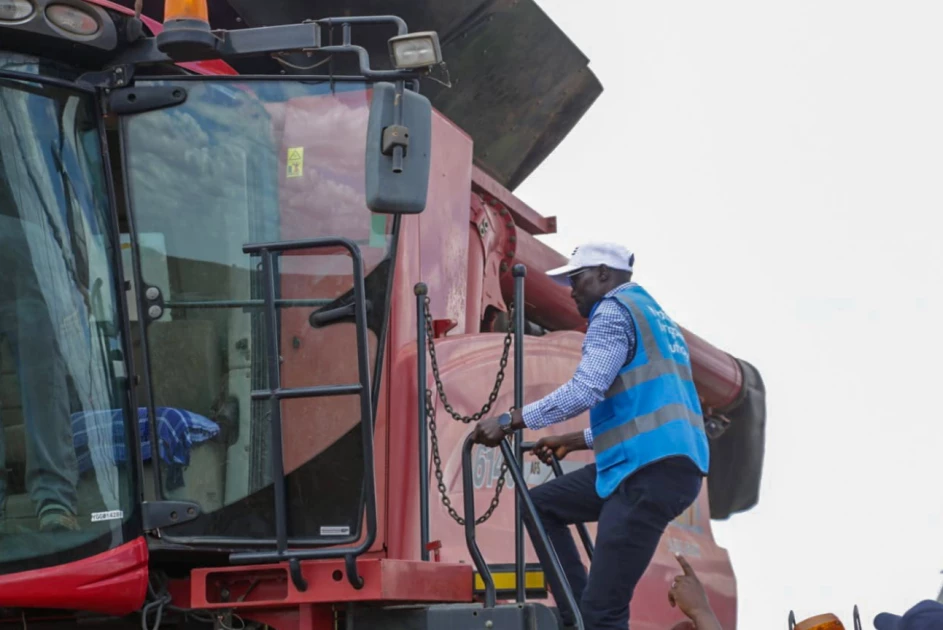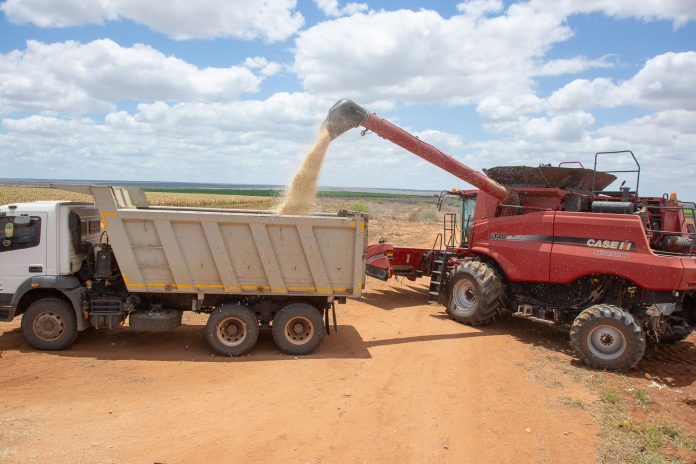Kenya has begun harvesting its first maize crop under the revived Galana Kulalu Irrigation Scheme, signaling a new phase in the country’s efforts to rebuild domestic food production and reduce reliance on costly imports. The milestone, marked by Kenya’s Water, Sanitation and Irrigation Ministry on October 11, follows two years of restructuring that repositioned the long-stalled project under a public-private partnership (PPP) model with private investor Selu Limited.
The Galana Kulalu Food Security Project, spanning parts of Kilifi and Tana River counties, was initially launched in 2014 as Kenya’s flagship irrigation initiative aimed at unlocking the agricultural potential of arid and semi-arid regions. After years of underperformance and questions about viability, the project’s revival under a PPP model now represents a policy pivot, one that seeks to blend private capital and operational expertise with public infrastructure to achieve food sovereignty at scale.
Water and Irrigation Cabinet Secretary Eric Mugaa, who presided over the launch of the first seed maize harvest, described the development as proof that “the Galana Kulalu project is on track to become a food hub for Kenya.” The government estimates that the country spends about KSh500 billion annually on food imports, a burden the project aims to cut by increasing local production capacity. “This is a demonstration that the Bottom-Up Economic Transformation Agenda can deliver results if backed by sustained investment and collaboration,” Mugaa said.
Read also: Lagos hosts Africa’s first Electric Powerboat Race, steering a shift in the continent’s Blue Economy
The initial 1,500 acres under irrigation have yielded between 28 and 30 bags of seed maize per acre, a strong start given the semi-arid conditions of the Galana basin. Officials say that 330 acres will be harvested in the first phase over the next five days. Selu Limited, the private partner managing operations, plans to expand cultivation to 3,200 acres by the end of 2025 and 5,400 acres by June 2026. The long-term target is to irrigate 20,000 acres once additional water storage infrastructure is completed.

Central to this revival is the government’s investment in modern irrigation systems. The project now includes a 20,000-cubic-metre intake well, a 550,000-cubic-metre reservoir, a 2-kilometre main canal, and a new 20,000-cubic-metre offtake pump, infrastructure that collectively stabilizes water supply to support year-round farming. According to Mugaa, two small dams already built in the region can supply irrigation for up to 6,300 acres, while a planned large dam will eventually make possible the irrigation of up to 200,000 acres.
Read also: Ethiopia secures United States backing for $10 Billion Bishoftu International Airport project
At full operation, Galana Kulalu could become Kenya’s single largest irrigated maize production zone, equivalent in size to the total irrigated area currently under maize cultivation in several other counties combined. Its output potential has implications not just for national food reserves but for regional grain stability in the Horn of Africa, where climate shocks have repeatedly disrupted rain-fed agriculture.
The partnership with Selu Limited has also begun to generate local employment. According to company CEO Nicholas Ambanya, about 200 jobs have already been created, with more expected as operations expand. “This project shows that public-private partnerships can deliver tangible results in food security and rural job creation,” he said, noting that the company’s investment model integrates mechanized farming and high-yield seed technology.
Government officials argue that irrigation, not rain dependence, will determine Kenya’s agricultural future. Irrigation Principal Secretary Ephantus Kimotho emphasized that Galana Kulalu “has proven that with water, arid lands can be transformed into productive agricultural zones.” He added that the ministry is working with other private investors interested in developing an additional 180,000 acres for cultivation across the region, a move that could make irrigation-based agriculture the cornerstone of Kenya’s food strategy.
The project’s progress has also drawn parliamentary scrutiny and support. National Assembly Water, Irrigation and Blue Economy Committee Chairman Kangogo Bowen, who inspected the site, said the funds allocated to the project have been effectively utilized. “We will continue to provide oversight and ensure that every shilling invested in irrigation infrastructure translates to measurable output,” Bowen said.
Read also: Morocco’s whistled language faces extinction as drought and migration empty Atlas highlands
For Kenya, the revival of Galana Kulalu marks a broader policy shift, from large, state-driven schemes toward partnerships that distribute risk and align incentives for efficiency. The government’s choice of a PPP framework reflects lessons learned from earlier phases of the project, which were hampered by cost overruns, poor management, and limited accountability. Under the current structure, Selu Limited bears operational responsibility and performance risk, while the state provides land, water infrastructure, and policy support.
The model’s success will depend on how it balances productivity gains with environmental resilience. Experts warn that large-scale irrigation in fragile ecosystems can strain groundwater, alter soil chemistry, and increase salinity if not properly managed. The Galana basin, part of the lower Athi-Galana-Sabaki catchment, already faces periodic water scarcity and sedimentation challenges. Long-term viability will therefore require robust monitoring of water use efficiency, soil health, and biodiversity impacts.
For many observers, the harvest is a sign that Kenya’s ambition to industrialize agriculture through irrigation can work when governance and incentives align. With droughts becoming more frequent and unpredictable, irrigation-fed systems like Galana Kulalu offer a practical pathway to climate adaptation, stabilizing food supply while reducing the vulnerability of farmers who depend on rainfall.
As combine harvesters moved across the fields this week, government officials framed the moment as just a beginning. “This harvest shows that Kenya’s food security strategy is entering a new phase,” Mugaa said. Whether Galana Kulalu becomes a national model for sustainable agricultural transformation, or a temporary rebound, will hinge on continued investment, transparency, and an enduring balance between production and ecology.







